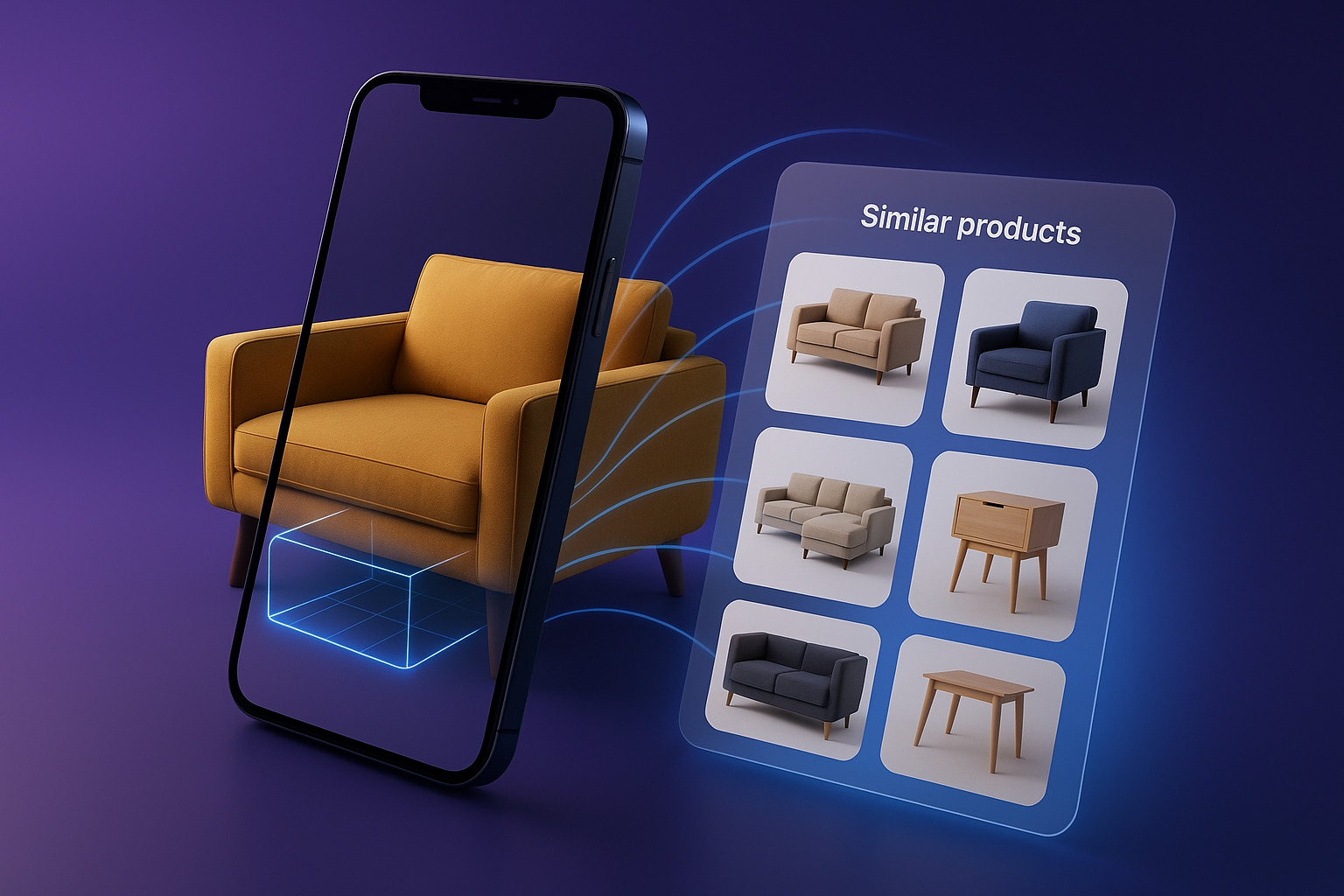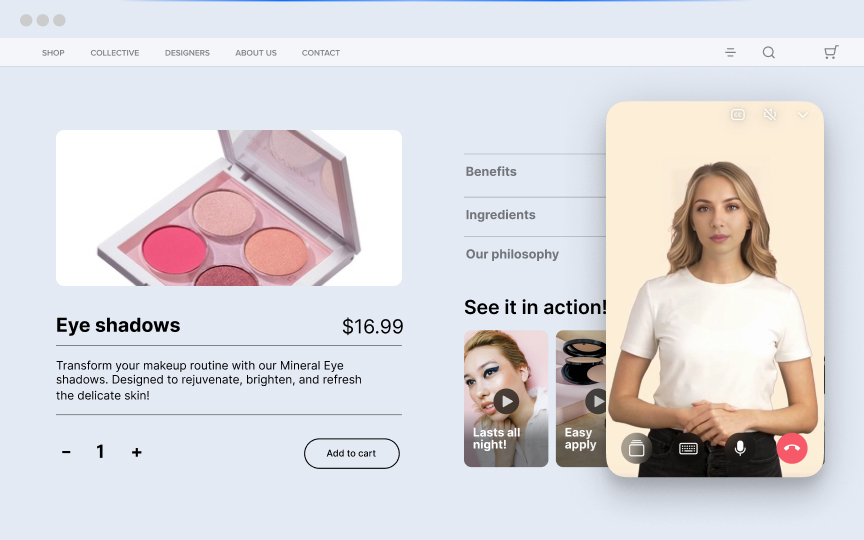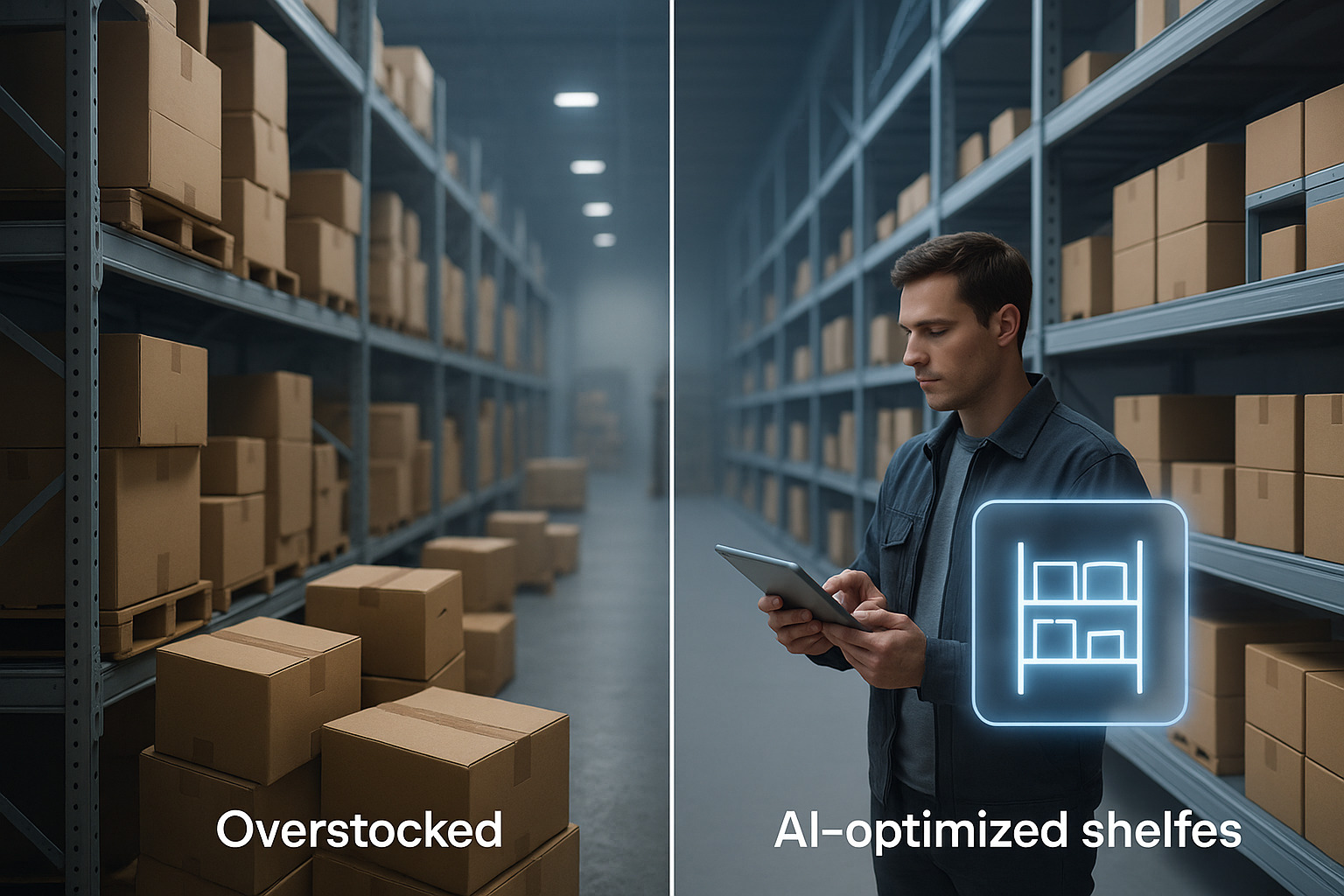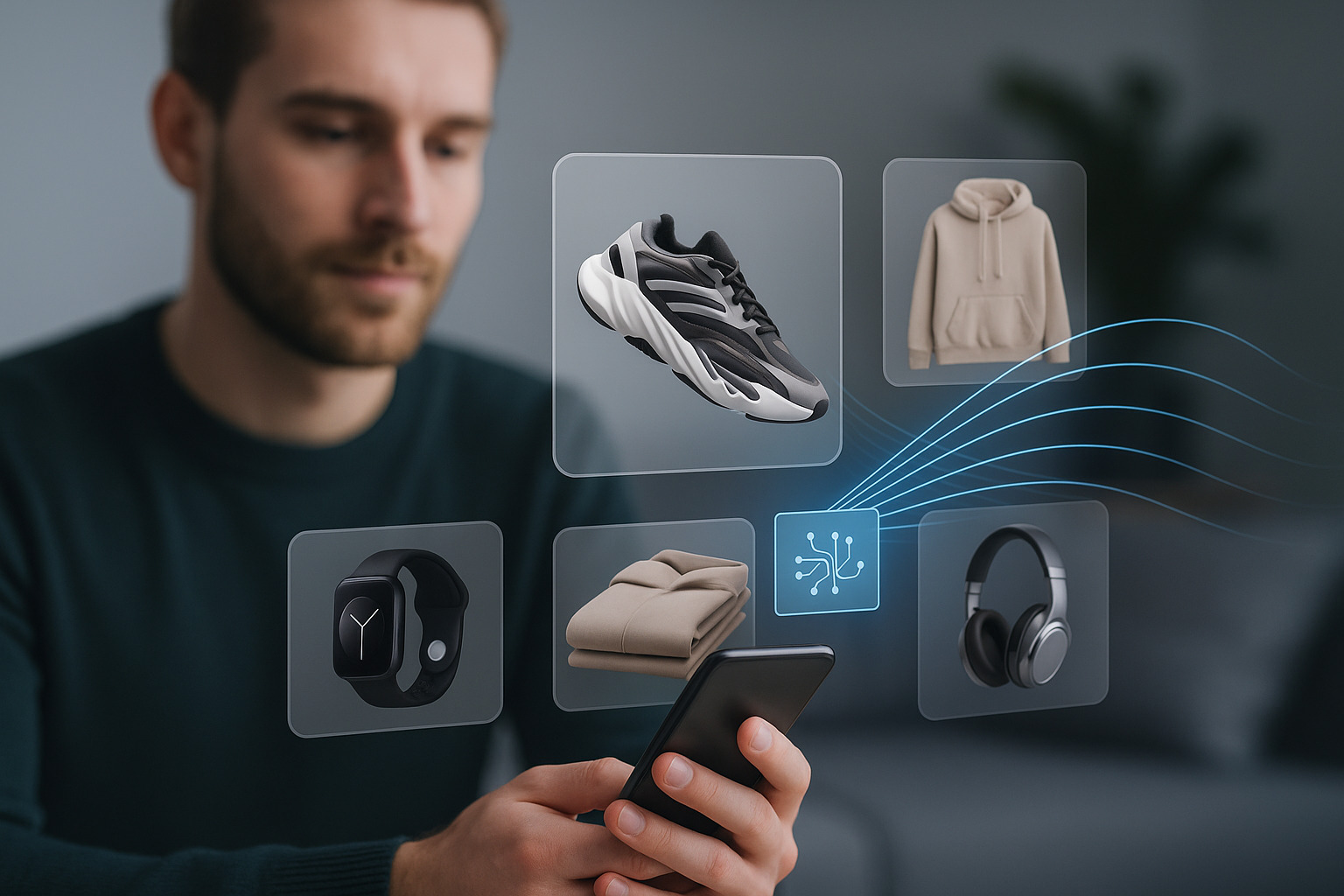Empty shelves, bloated backrooms, fickle shoppers, razor-thin margins. Manual spreadsheets and gut-feel ordering can't keep up when demand shifts or products go viral. The challenge grows as new sales channels pop up daily and competitors offer one-click shopping.
This is where AI changes everything. It processes millions of signals, from sales data to weather patterns to social media buzz, to predict what shoppers want, spot fraud, and suggest products they'll love. That's why 91% of IT leaders list AI as a top priority by 2026, and 80% of consumers are more likely to buy when experiences feel personalized.
These seven proven AI applications turn everyday retail headaches into measurable growth. You'll see real success stories and practical advice for launching high-impact projects without disrupting your daily operations.
1. AI-Driven Inventory Management & Optimization
Walmart keeps shelves stocked using machine learning that analyzes sales patterns, weather, local events, and social media. Their system automatically orders replenishment, eliminating stockouts while accelerating inventory turnover.
Empty shelves frustrate customers, while excess inventory ties up cash and creates waste. Old-school spreadsheet forecasting falls short with thousands of variables, costing you money and eroding customer loyalty.
Where to start: Begin with your fastest-moving products. Rich data helps the system learn quickly. You'll need clean sales data from both stores and online, as well as connections to your inventory systems for automatic ordering.
2. Predictive Demand Forecasting
Beyond basic inventory management, knowing what shoppers will buy isn't guesswork anymore. Sephora uses machine learning that combines sales history, loyalty data, social media activity, and even weather to forecast demand for each store. Their plans update daily, keeping popular products available while reducing excess stock.
Unpredictable demand triggers a chain reaction of problems. Out-of-stock items frustrate shoppers and kill sales momentum. Overstuffed warehouses drain cash. Profit-killing markdowns become inevitable when demand spikes catch you off guard.
Where to start: Feed your system fresh information on a weekly basis and compare predictions to actual results. Fine-tune before expanding to other categories. Mark promotions and events as separate factors so your system learns their true impact on buying patterns.
3. Personalized Recommendations
Once you've mastered inventory flow, the next step is matching products to individual preferences. Amazon's recommendation engine tracks every click, scroll, and purchase to uncover product relationships, using advanced AI, including Graph Neural Networks. These personalized suggestions drive Amazon's sales and help keep shoppers engaged, though exact figures aren't publicly shared.
Without tailored recommendations, you're left with low conversion rates, generic product pages, and missed sales opportunities. Shoppers expect brands to understand what they like; miss that mark, and they'll leave faster, costing more to bring them back.
Where to start: Start by connecting clickstream, purchase, and product data, then add machine-learning models that score preferences in real time. Link your outputs to your product information system to ensure prices, images, and inventory remain current. Balance personalization with privacy by giving shoppers control over their data, and run ongoing tests to improve your algorithms.
4. AI-Powered Chatbots & Virtual Shopping Assistants
Building on personalized discovery, every visitor to your site deserves immediate attention, no waiting, no business hours. Firework's AVA enhances online shopping with real-time assistance and works with Firework's 24/7 video showroom features.
Shoppers tap a product in a vertical video, and AVA instantly answers questions, suggests matching items, and guides them through the purchase process without leaving the video. Since the assistant works around the clock, you'll capture late-night impulse buys and international shoppers that traditional support misses.
This always-on coverage eliminates two major expenses: staffing costs and lost sales from delayed responses. You'll also avoid frustrating FAQ pages since AVA gets smarter with every conversation.
Where to start: Begin by teaching AVA the five questions your team answers most often, then expand once you confirm accuracy. Make sure complex questions transfer smoothly to human agents. Shoppers judge your service on solutions, not technology. Track response time, successful AI resolutions, and assistant-driven sales; when all three increase together, you've created the right experience.

5. Visual Search & Image Recognition
Visual search technology has significantly enhanced how customers find products, enabling them to use images rather than text. AI-powered visual search enables you to snap a photo and instantly view similar items in a retailer’s catalog.
A great real-world example is Wayfair. The company’s app features advanced visual search, allowing shoppers to upload or take a photo of any furniture or décor item and instantly receive visually similar options from Wayfair’s massive collection. This bridges the gap between inspiration and purchase, giving customers a seamless way to turn an idea into reality.
Visual search is particularly effective in product categories where appearance is paramount, such as furniture, home décor, fashion, and beauty. AI analyzes the image’s attributes (like color, shape, or texture) and suggests matching products or complementary accessories. This process simplifies discovery and feels more natural, mirroring how people browse on social media.
Where to start: For retailers looking to implement visual search, ensure the use of high-quality, consistent product images. Tag images with detailed metadata (style, material, color). Place a clear camera or photo-upload icon prominently in your digital store. Deliver instant, visual-first results to keep shoppers engaged and help them convert before inspiration fades.
6. Dynamic Pricing Optimization
Smart product discovery demands smart pricing. AI-driven dynamic pricing enables retailers to maximize sales and margins by adjusting prices in real-time based on demand, competitor movements, and inventory levels.
A prime example is Amazon, which changes prices millions of times daily using AI-powered algorithms to stay competitive and optimize profit. This hyper-responsive pricing strategy keeps Amazon ahead in fast-moving markets, ensuring that pricing reflects current supply and demand.
Where to start: To get started, focus first on products with flexible or seasonal demand. Feed your dynamic pricing system with at least 1–2 years of clean sales data, live competitor prices, and inventory status.
Set clear minimum and maximum price boundaries to protect your brand’s value perception. Transparent messaging, such as “Limited-time smart discount,” reassures customers and boosts conversion by highlighting fair pricing practices.
7. Fraud Detection & Loss Prevention
While maximizing legitimate sales, protecting inventory from theft requires equal attention. Loss prevention quietly costs retailers billions industry-wide, but AI turns cameras and transaction records into real-time guardians that catch theft before it happens.
Walgreens demonstrates this perfectly. Their stores combine computer vision with machine learning to monitor security feeds, flag unusual behavior, and alert staff before merchandise disappears. Early tests reduced shoplifting and allowed employees to focus on helping customers instead of monitoring the premises.
Traditional security depends on after-the-fact reviews and occasional patrols, leaving gaps both online and in-store. AI closes those gaps by learning patterns, immediately identifying unusual activity, and continually improving with each incident prevented.
Where to start: Start small by installing AI cameras in your highest-theft areas first. Measure the reduction in losses, then expand based on results. Train your team to respond to alerts and handle situations without disrupting the shopping experience. Address privacy concerns with clear signage and anonymous data processing to maintain customer trust and confidence.
The Future is Now!
As competition intensifies, the results appear where they matter: customer satisfaction and your profits. From smooth inventory management to personalized shopping experiences, today's systems solve the exact problems that drain profit and loyalty.
When you connect multiple AI solutions, insights multiply, barriers disappear, and every customer touchpoint works together. This integrated approach becomes harder for competitors to copy once you've established it.
Take action now. Pick your most pressing challenge, test quickly, and expand with confidence. When you're ready to turn engagement into sales through interactive, AI-powered video commerce, Firework can help you create a 24/7 video showroom that keeps customers shopping and coming back. Book a demo to find out how!
Unlock Exclusive Insights
By submitting this form, you agree to Firework's privacy policy and consent to receive personalized marketing communications. You can unsubscribe at any time.






























